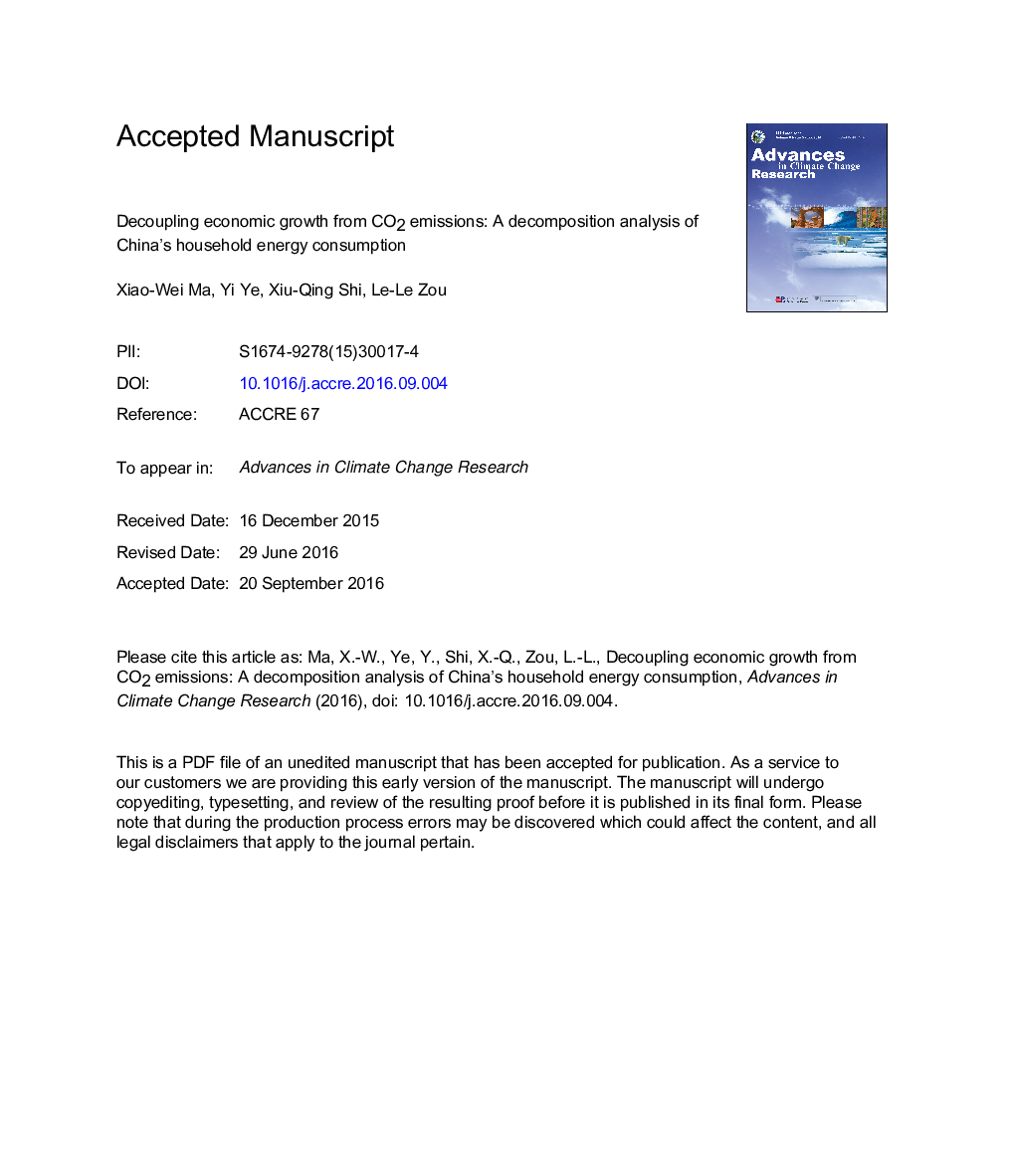| Article ID | Journal | Published Year | Pages | File Type |
|---|---|---|---|---|
| 5778979 | Advances in Climate Change Research | 2016 | 17 Pages |
Abstract
This paper analyzes Chinese household CO2 emissions in 1994-2012 based on the Logarithmic Mean Divisia Index (LMDI) structure decomposition model, and discusses the relationship between household CO2 emissions and economic growth based on a decoupling indicator. The results show that in 1994-2012, household CO2 emissions grew in general and displayed an accelerated growth trend during the early 21st century. Economic growth leading to an increase in energy consumption is the main driving factor of CO2 emission growth (an increase of 1.078Â Gt CO2) with cumulative contribution rate of 55.92%, while the decline in energy intensity is the main cause of CO2 emission growth inhibition (0.723Â Gt CO2 emission reduction) with cumulative contribution rate of 38.27%. Meanwhile, household CO2 emissions are in a weak state of decoupling in general. The change in CO2 emissions caused by population and economic growth shows a weak decoupling and expansive decoupling state, respectively. The CO2 emission change caused by energy intensity is in a state of strong decoupling, and the change caused by energy consumption structure fluctuates between a weak and a strong decoupling state.
Related Topics
Physical Sciences and Engineering
Earth and Planetary Sciences
Atmospheric Science
Authors
Xiao-Wei Ma, Yi Ye, Xiu-Qing Shi, Le-Le Zou,
